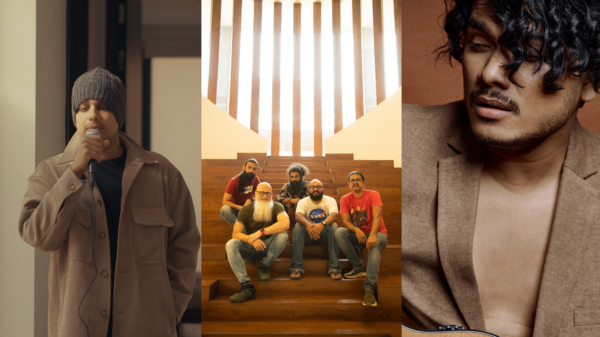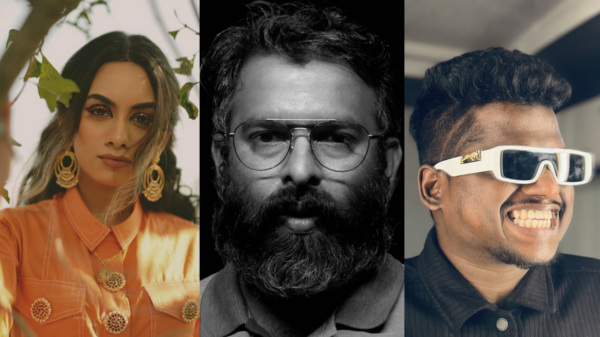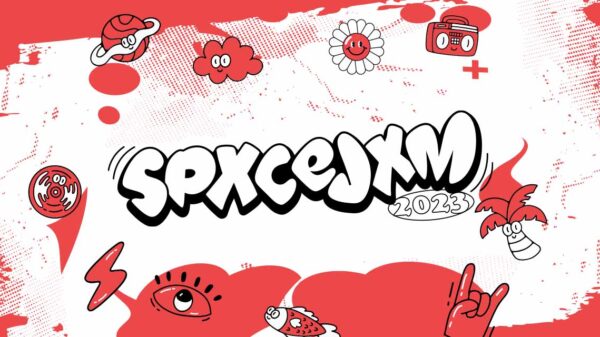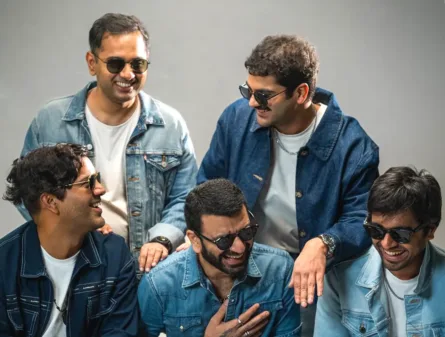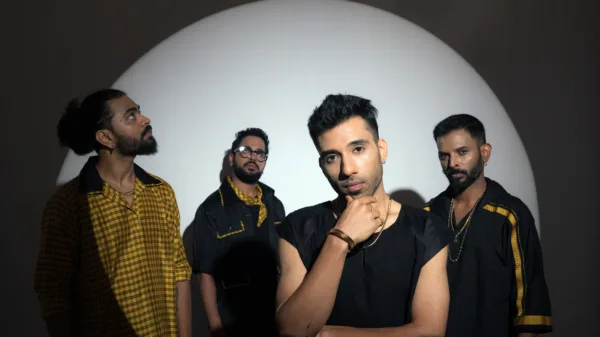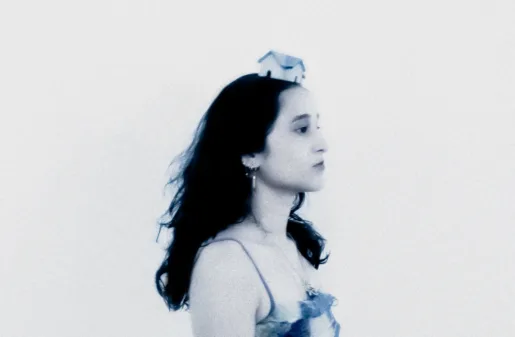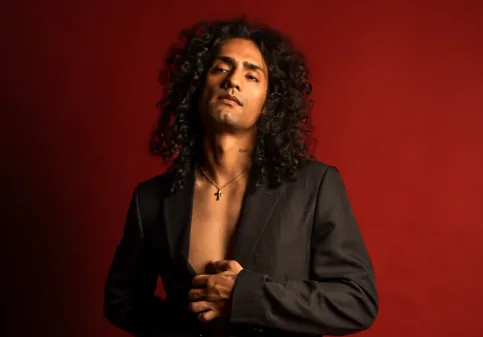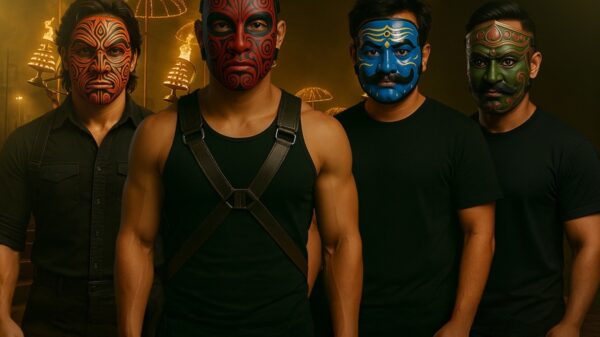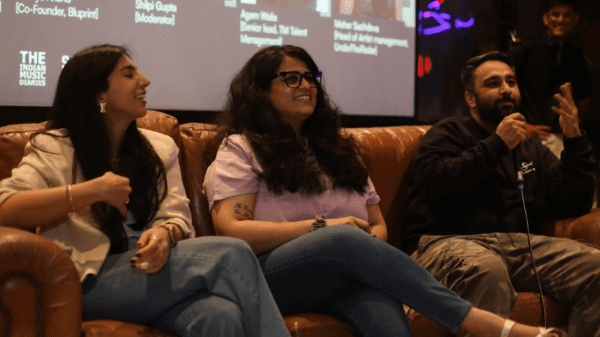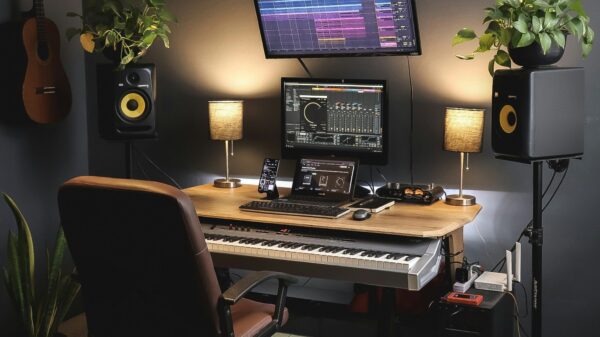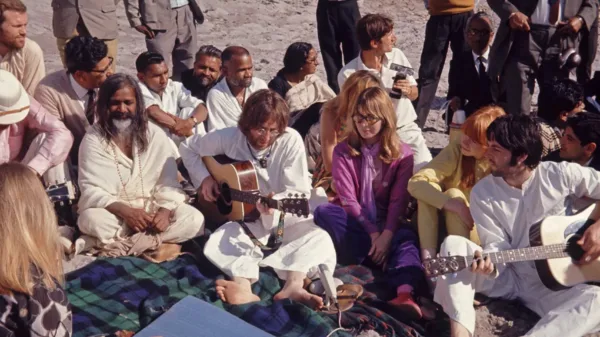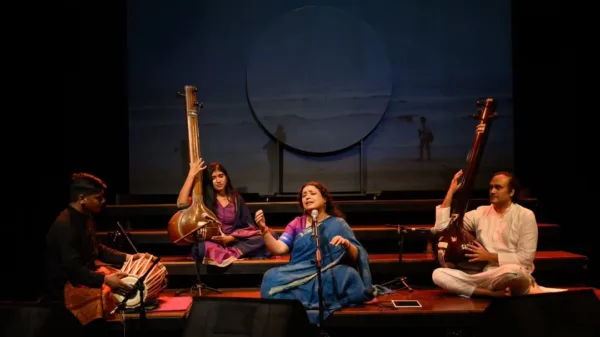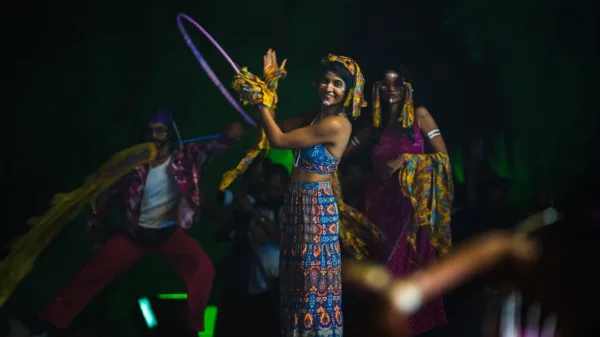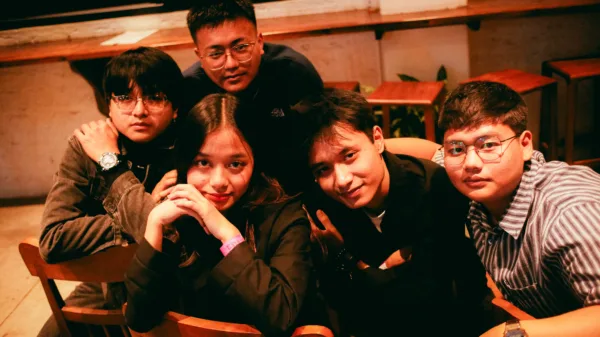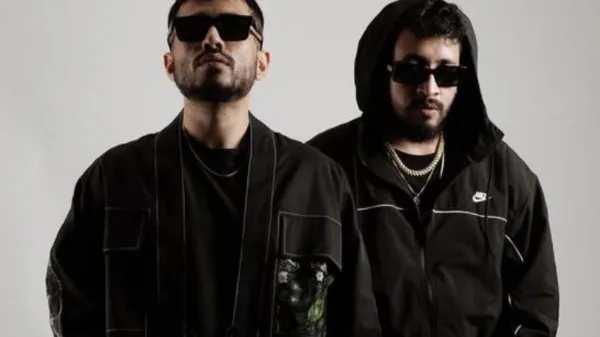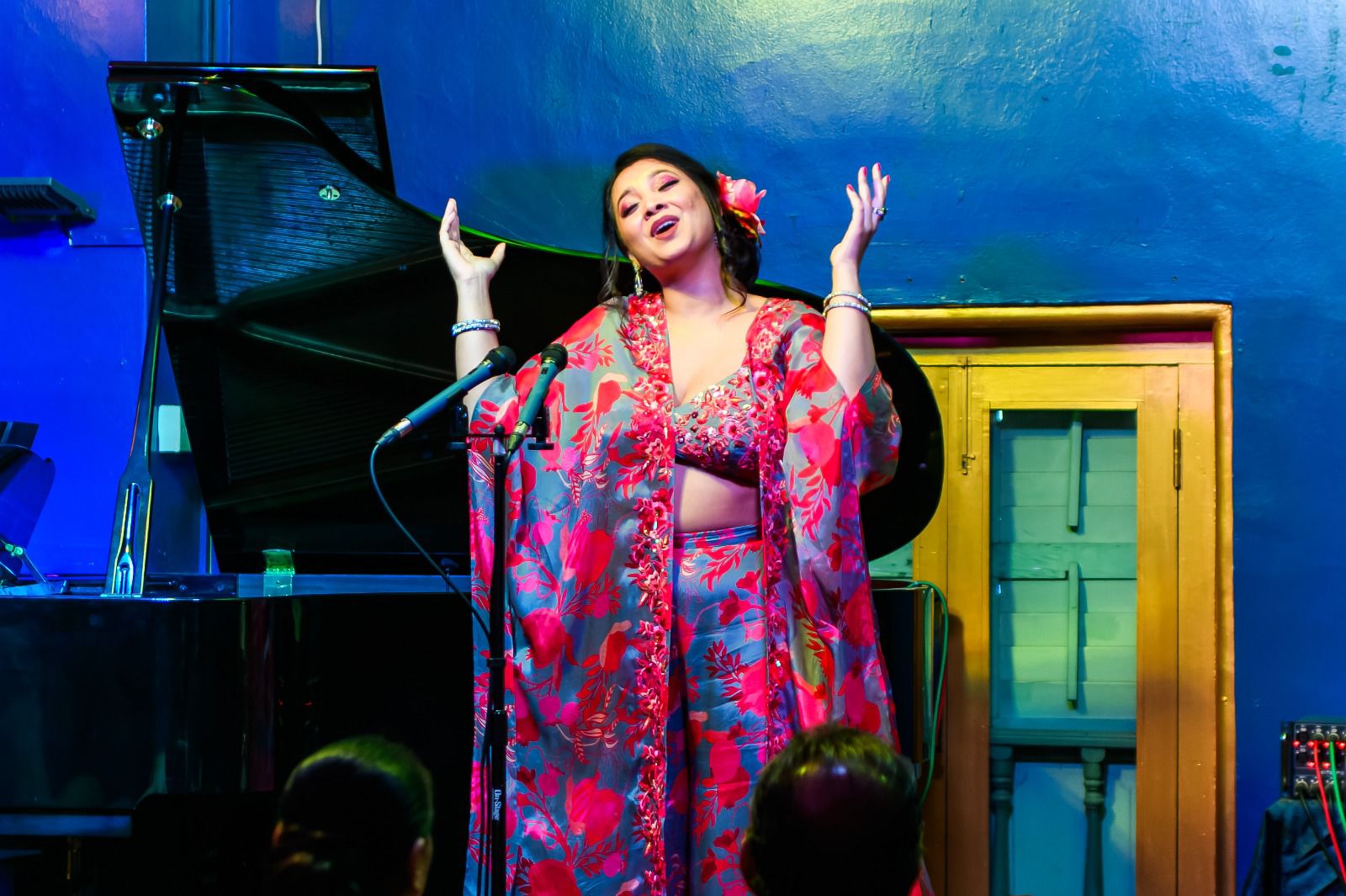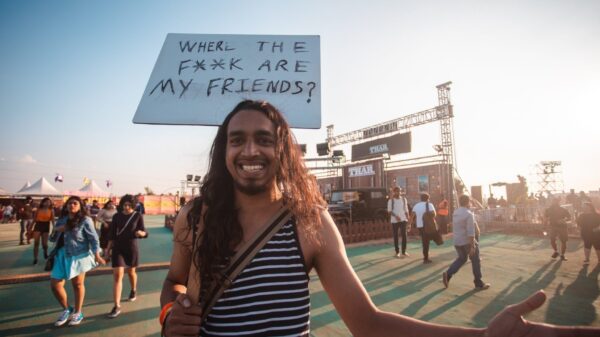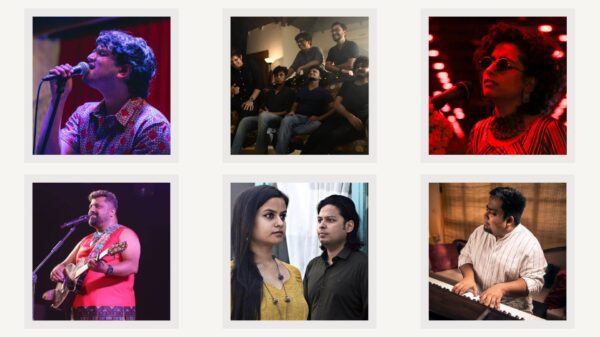From the last rows of a luminous room at the Italian Embassy Cultural Centre in New Delhi, I saw Cheryl Bains perform, alongside Elia Cecino – where she presented an incredible repertoire of Puccini and Liszt. Almost ethereal in her golden saree, she had the entire audience taken with her as she moved through the motions of her act, oozing confidence and forming a spellbinding intimacy with everyone present with the way she understood and communicated her art. I knew I was watching something unfold that was going to be special to me, and everyone else in attendance, for a very long time.
Bains is an operatically trained soprano and a classical crossover artist. A graduate of the Manhattan School of Music, New York, Cheryl has received praise in her performances as Gretel in Hänsel und Gretel, Zerlina in Don Giovanni, Lakmé in Lakmé, and Maria in The Sound of Music in concert work.A recipient of a scholarship for Classic Lyric Arts, New York, she was also given the opportunity to study and perform in concert in the Emilia-Romagna region of Italy, where she played roles such as Susanna in Le Nozze di Figaro. Currently in Los Angeles on an Artist Visa, where she is mentored by acclaimed Jazz Composer, Arranger and Orchestrator from Hollywood, Ladd McIntosh, , she spoke to us about her origins, her inspirations, her extraordinary journey full of marvelous accomplishments to get to where she is today, and the essentiality of her identification with the role of the artist for herself.
1. What were your first interactions with music? What, would you say, were the main inciting factors when it came to you pursuing music?
Growing up in Singapore, I began learning music at the age of 5 through TV serials like Kasam Se. My mom watched these shows, and I followed the intro songs quite well. It occurred to her to send me to study Hindustani classical music, at that age. I guess that was the inciting factor. I started and then I never stopped.
2. At what point did you know that you wanted to go for operatic training and pursue classical music? Was it an organic choice, were there people around you when you were growing up who influenced you to pursue the kind of music that you have been working on?
I grew up in Singapore. In 2009, there was a global recession that affected almost everybody. My father worked with Singapore Airlines at that time, and was unfortunately laid off, following which we relocated back to India. I had already been training in Hindustani classical, Broadway musical theater, dance, piano — whatever my parents thought would be good for me. When we moved back, I had the question – what was I going to do now, because I did not want to stop. We started dance classes, my mom studied with Shiamak Davar’s Dance Academy, and I studied with Ashley Lobo’s academy, which is not really relevant to the story besides the fact that there was a young girl in my mom’s dance class, who knew that I sang because my mom used to talk about it. She suggested that I join the Austrian Cultural Forum’s Mozart Children’s Choir of India. The amazing thing about this ensemble at the time is that it was completely free, all they wanted was dedication and time for rehearsals, concerts and associated things. This was unexpected, especially at a difficult time for my family.
It was a western classical choir and we did traditional works, but it still did not truly register with me. I was doing it because it was the natural thing to do, until the first performance. We did Giovanni Batista Pergolesi’s Stabat Mater, it is an oratorio from the Baroque period of music. It is a very heavy work, but till this day it remains my favorite piece of music. Something happened to me in the middle of one of the movements. I wasn’t really singing too much, because I didn’t know what I was doing. Something happened to me in the middle of one of the movements. I stopped singing, and took the orchestra, choir, and soloists in. It dawned upon me that this is what I should be doing. I was only 9 or 10 years old then.
3. You mentioned you have studied Hindustani classical music. How has that figured as an experience, or as a shift?
I studied Hindustani classical from the age of 5, till the point I graduated from high school. It’s an art I have always loved, although I wouldn’t say that singing traditionally is my strongest suit. What I have grown to love is the theory, the musicality, and the tonalities we have. The thought process is spontaneous, and that’s what makes it really special and enriched by our centuries of tradition. I think it’s evergreen, and can also be reimagined, which is very unique.
4. You have grown up in Singapore. How did the country’s musical landscape – or the facilities that it provides influence you?
In Singapore, my former teacher, Ms. Khor Ai Ming, is a Malaysian-Chinese contemporary classical soprano, who taught me the art of Chinese Art Song. As a young artist, I was very involved with her performing company, and received invaluable exposure to different pieces of traditional and classical Chinese and Malaysian music. This upbringing has such a deep and special imprint on my heart, and I express it not only in singing but also writing. Most recently, I arranged a beloved piece “Mo Li Hua” (Jasmine Flower) and I performed it as a way of paying homage to tradition, while making it my own in a way.
5. You said you had a lot of exposure to traditional Malaysian and Chinese music while growing up in Singapore. How does it feel to reconcile that, which also formed a part of your day to day life experience, with a tradition of music that is so perceptively European, in that sense?
That’s something I have thought a lot about as an artist. I feel singers have a responsibility to make a choice about whether we want to sing only the existing repertoire, and/or create something new. I think of myself firstly as a storyteller, and so I wouldn’t say that the term is to “reconcile”, but rather showcasing my multifaceted background in the best way I can. For example, at my last performance in Singapore, I sang a mixed program of Classical, Crossover and Cabaret pieces, as well as the arrangement of Mo Li Hua I mentioned earlier. But, instead of using a very traditional arrangement of Mo Li Hua, which might not have blended in easily despite being beautiful, I did my arrangement as it still features the styles and the textures that you would expect to hear, but more blended harmonies as well. So this allows me to present myself in a multi-faceted way, rather than reconciling.
6. What is the kind of audience reception when you do bring out these elements, because I would assume a form of music that is so deeply rooted in centuries worth of tradition will have some perceived notions of performance?
That is a very real aspect of performing — it’s to make it relevant to audiences, right? Especially with classical music, why does it matter right now? I think this older tradition of music has survived this long because there are aspects that speak to who people are in their everyday lives. But, I think the trick is in how a performer presents music in a way that resonates with the audience, especially if it is a first-time audience or a mixed crowd that might not be accustomed to sitting through recitals, operas or classical concerts. So, I like to give it to them in bits and pieces and weave a story. Especially when I sing in languages other than English, it is critical for me to talk to my audience with the narrative of what I’m feeling or what I want them to feel and then present. When it’s my own piece or something I’ve arranged, I let the audience peek into my mind by telling them something interesting about the music and what it means to me. In this way, I allow the audience a chance to engage deeply with the music and pick out elements as they listen. It is kind of like the experience that I had when I was 10 years old, and I was in Stabat Mater for the first time, and I was taking it all in and feeling everything. When the audience is able to sit and absorb it all, we can experience emotion at the same time and understand each other in a profound and poetic way. That’s what makes classical music beautiful, special and relevant in the 21st century.
7. You have been trained at some of the most prestigious institutes, which place would you say has had the most impact on you? Would you change any of it – have you ever wanted to go for any alternative mode of learning?
Learning and performing has been an organic experience for me. While I don’t think I would change anything, I wouldn’t say that there is only one place that has influenced me the most. I did my Bachelors degree in Music at the Manhattan School of Music in New York. That time was all about hard work, determination and discipline.
My time in Singapore was about taking in the rich cultures I was exposed to, and unknowingly forming my artistic voice, even before I knew how to use it. LA has really been about grit and determination, picking up new skills, and using the voice that I’ve had in me to foray into not just being a performer but an artist.
8. You have collaborated with Ravi Pawar on Ravi Raaga, and you have also compositionally reworked and reharmonized pieces from Indian music, what has that experience been like ?
Ravi Raga is a very unique and original fusion of Hindustani and Western Classical music. The opening hooks for the two tracks Zenith and Sands of Time, were written with more of a classical approach, being more “song-like” and following the chord progressions we laid out later. Simultaneously, we used a jazz approach to link Hindustani and Western Classical, creating licks, and improvising over jazz-inspired harmonies that went with Ravi ji’s playing and my singing.
Speaking to some of my other work, I arranged the Kabir bhajan “Ghat ghat mein panchi bolta” and “Vande Mataram”, which I premiered on the occasion of the 15th Annual International Students’ Webcast for Manhattan School of Music. It was a special opportunity for me to represent my country (and I was the closing act for the entire show!). When I got this opportunity, I knew I wanted to display this musical heritage in a way that would relate to wider audiences, and still pay tribute to the original versions of this music. So, I called for a Western Piano Trio, and set the melodies in a way that was recognizable, but with new elements for sure.
9. You have performed at several incredible places around the world, which place has meant the most for you? Do you have any goals of performing at any specific venue?
Absolutely, to answer the first part of your question, the place that has meant the most to perform in has to be my home country – India, unexpectedly so. I don’t think it’s unexpected as I look back on how the chain of events unfolded, but seeing the line of music that I’m in, it is a little unexpected. This country has given me absolutely everything, from the first seed of inception to the first stages as an adult to put myself out in the way I want to be out there independently. So, I would say India means the most to me, of course.
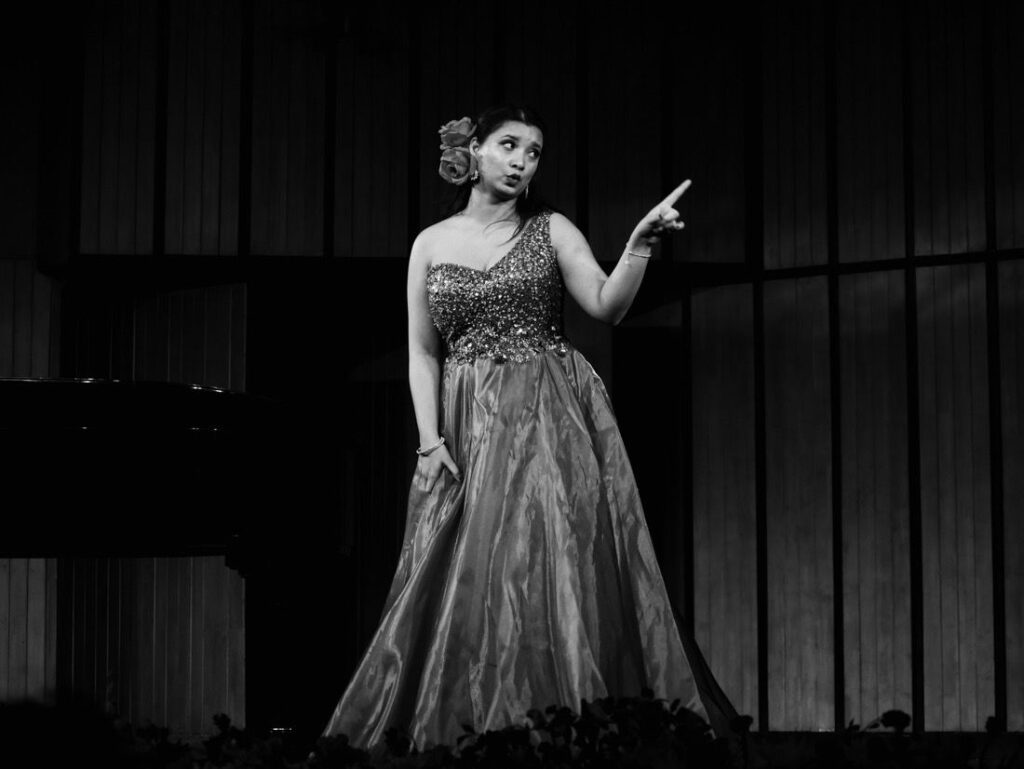
As for singing in other places, I wouldn’t say there is a checklist, but there are dream locations, of course : The Metropolitan Opera House in New York, the La Scala, the Walt Disney Concert Hall — Esplanade is one place I’m really keen to return to and put on a show as an independent performer. Simply because that was the first place I had my debut for a lot of important concerts in my repertory. Other than that, whichever place is receptive or wants to have me and I could sing to them. As long as I’m singing and people are there, I’m having a good time.
10. What has the experience of performing in India been like? How has the audience reception varied from spaces in other countries, assuming there is a difference?
India is fabulous. We have a culture that is so rich in music, art, history, dance — everything that is artistic has a home in India, including the music I perform. I have been so surprised at the enthusiasm that audiences have here! One story that comes to mind is when I performed with The Neemrana Music Foundation at the Kiran Nadar Museum of Art. I sang this unusual piece from the American Art Song Repertoire – The Serpent by Lee Hoiby. It’s a comedy piece and unusual because it’s not conventionally beautiful. I wasn’t sure how it was going to go over, but amazingly, the audience totally got it and weren’t afraid to laugh out loud, which is not always the case in other countries! It was fantastic to sing to such a warm room and it’s a very special memory for me.
11. You’re currently being mentored by Ladd Macintosh, what is that experience like? Does that also mean you will be branching out further compositionally?
Ladd is a really well respected composer, orchestrator and phenomenal jazz arranger in Los Angeles. He is 83 years old, and has a world of experience. Simply, he is a jazz guy, through and through. Studying with him has been eye-opening as I come from a classical school of thought. My ears are pretty good according to Ladd, and funnily the first time I’ve ever had red pen notes on my homework is with him! I am very fortunate to expand myself this way, and I think you can start to see the influence in Ravi Raga and more so in what I’m coming up with soon!
12. From your website, I got that you have been traveling, learning, and performing for a very long time. This transitive state in your life, has it caused a cognitive dissonance, especially when it comes to your musicality?
I wouldn’t say there is a cognitive dissonance, but it fascinates me to observe how other colleagues operate in the same field to produce a same or similar result, because we all have different habits that are a result of where we studied.
In a lot of situations, we are often on a deadline or have few rehearsals to put a show together. For example, when I played with Elia Cecino at the Italian Embassy Cultural Institute, we had just one rehearsal for the concert together. So, I’ve learned to mitigate anxieties and stress by doing my best to always be prepared and be a good collaborator to others. As my dad always says, nobody really cares what happens before the concert, the audience just cares about what happens on stage!
13. What are some future projects that you are eyeing for yourself?
I am very excited to be returning to India in August, to appear for the semi-finals of the Con Brio Competition at Mumbai’s NCPA. I do have more concerts in the works, including one in Calcutta with a Chamber Orchestra at the iconic Victoria Memorial Hall, which will be my debut in that city come December! I am also writing a song-cycle to be performed based on the existing literature and scriptures we have –that’s all I will say about that for now! I hope to find the right producers, players, and team I would need to take it forward.
.

